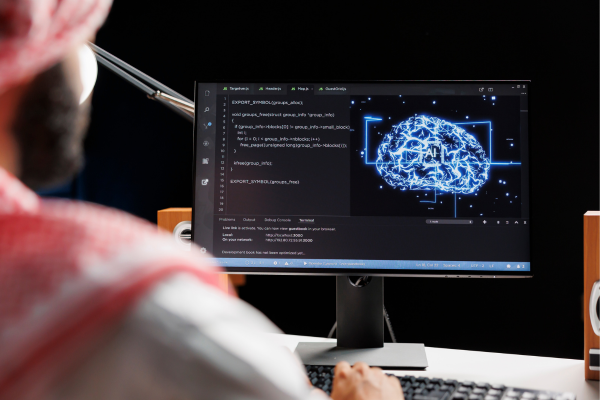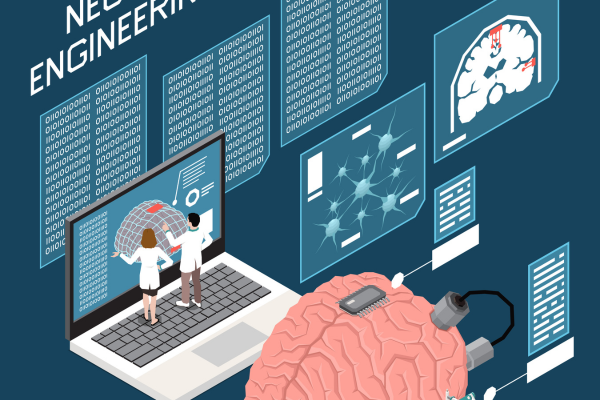Introduction

Deep learning has recently advanced significantly in many areas, including image generation. This section provides an overview of the topic and emphasizes how deep learning can revolutionize the process of creating original photographs. Deep learning applications have revolutionized fields such as art, design, and entertainment by using advanced algorithms and large datasets to create increasingly realistic and visually appealing images.
Table of Contents
Understanding Generative Models
The foundation of deep learning-based image generation involves generative models. The purpose of these models is to generate new samples that closely reflect the original data distribution by learning the underlying structure of the dataset. When it comes to image generation, generative models attempt to generate images that look similar to real images. They accomplish this by synthesizing new images based on learned representations and identifying patterns and features found in the training data.
Can Deep Learning Generate Realistic Images?
Realistic scenes that closely mimic real-world scenes have been created with great success through deep learning. This section examines how deep learning models outperform traditional techniques in image generation. Through the use of sophisticated neural network designs and methods such as adversarial training, deep learning models are able to generate images with remarkable depth and fidelity.
Limitations of Traditional Methods
The production of realistic and diverse images was hampered by the fact that traditional image generation techniques sometimes relied on manual rules or overly simplified statistical models. These methods produced photographs that lacked accuracy and aesthetic appeal because they were unable to represent the complex patterns and variations found in real-world data.
Successes with Generative Adversarial Networks (GAN)
In the field of deep learning, Generative Adversarial Networks have become a groundbreaking method for generating org images. A generator and a discriminator are two neural networks that make up a GAN, and they are trained concurrently. While the discriminator learns to distinguish between real and constructed images, the generator learns to create realistic images. GANs can produce images of exceptional quality and diversity through adversarial training, outperforming earlier image synthesis techniques.
Applications of deep learning in image generation
Applications for deep learning-based image generation are numerous and span many different fields. Deep learning models are revolutionizing the creation and use of images, from preparing artificial data for machine learning models to creating realistic artwork and enhancing photographs. This section examines some of the most prominent uses of deep learning to generate images and talks about how they impact different fields.
Mechanics behind image generation with deep learning

Deep learning for image generation involves many complex steps, such as optimization, model training, and data pretreatment. This section provides a comprehensive examination of the fundamentals of deep learning-based image generation. It covers the importance of various elements in the image generation process, such as convolutional layers and activation functions and talks about how neural networks learn to represent and produce images based on input data.
Role of deep learning in image generation
Because deep learning makes it possible to create images that are almost identical to real images, it is essential to the process of creating images. This section looks at how deep learning has impacted the field of image production, showcasing its advances in digital art, computer graphics and visual effects. Deep learning is changing the way we see and engage with visual media by expanding the scope of what is possible in image synthesis.
Challenges and Successes in Deep Learning Image Generation
Deep learning still has many hurdles to overcome, even though it has made great progress in image generation. The main shortcomings and obstacles of deep learning-based image generation are covered in this section, including mode collapse, unstable training, and the need for substantial amounts of data and processing power. As well as highlighting recent developments that address some of these issues, it also opens up new avenues for creativity in the field.
Impact of deep learning on visual media and creative industries
Deep learning has a significant impact on creative industries and visual media. This section examines the ways in which deep learning-based image production is changing industries including gaming, advertising, animation, and cinema. Deep learning is revolutionizing the way we exchange and consume digital information by empowering designers and artists to generate realistic and immersive visual experiences.
The art and science of creating images with deep learning
Deep learning-based image generation is a science and an art. This section explores the artistic and technical components of deep learning algorithms for image generation, including the importance of domain knowledge, experimentation, and intuition in the creative process. Additionally, it highlights the scientific concepts of network topology, loss functions, and optimization algorithms that underlie deep learning-based image generation.
Limitations of deep learning in generating images
Despite its achievements, deep learning-based image generation has some shortcomings. Generation of high-resolution images, diversity of samples generated and interpretation of generated outputs are some of the major obstacles and hurdles in this field which are covered in this part. By recognizing these constraints, scientists can attempt to create imaging methods that are more flexible and reliable.
Deep Learning Tools for Image Generation to Boost Human Creativity
Deep learning-based image generation can be facilitated by a variety of tools and frameworks. This section examines the resources and platforms most widely used by academics and industry professionals. These technologies enable people to explore and express their creativity through image synthesis, ranging from specialized image generation models and applications to deep learning frameworks like TensorFlow and PyTorch.
Conclusion
In short, deep learning applications have shown that they are very adept at creating realistic and high-fidelity images. This section highlights the revolutionary potential of deep learning in image generation by summarizing the main ideas and findings included in the blog article. Deep learning is changing the way humans see and engage with images by expanding the scope of creative expression and visual media.
- You might be interested in reading these posts as well
- Machine Learning Optimization Algorithms & Portfolio Allocation
- Machine Learning Algorithms in Air Quality Modeling
- Machine learning algorithms in quantum computing a survey
- Machine learning algorithms for damage detection kernel-based approaches
FAQs
In fact, deep learning is able to create images from scratch, by extracting patterns from huge datasets and creating new images that closely mimic the training set.
Yes, there are some restrictions. These include the need for large datasets, demands for computer power, and difficulties in producing detailed, high-resolution images.
Applications of deep learning image generation include entertainment, art and design, as well as the creation of synthetic data for use in training more machine learning models.